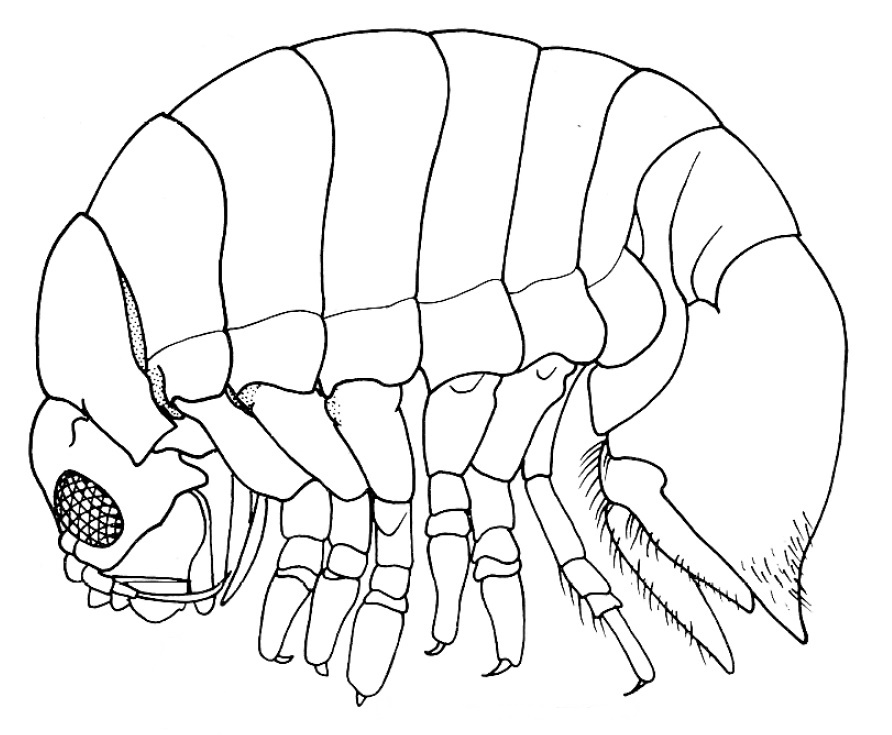Green Nephthea is one of the most colorful and popular soft corals in the aquarium hobby, but most aquarists (and scientists) have never heard of the curious crustacean which calls it home. The above illustration [credit: Bruce, 1994] depicts Xynosphaera colemani, the only species in its genus, which was scientifically described in 1994.
It is an isopod in the family Sphaeromatidae—a diverse group of shrimp which occasionally hitchhike into reef tanks. The species of isopods in this family are generally regarded as detritovores, feeding on whatever organic matter they happen to encounter, and so they can be considered beneficial additions when they are found. Xynosphaera, however, leads a somewhat different life.

Unlike typical free-living sphaeromatids isopods, Xynosphaera lives within the living tissue of soft corals of the family Nephtheidae, which makes this the only known shrimp endosymbiotic in corals. The precise identification of the host coral isn’t known beyond the family level, but, since the coral is mentioned to be green, it seems most likely to be a species of Nephthea.
It has only been documented on three occasions in the wild, but this is likely due to the cryptic habits of this species rather than any real rarity. It occurs in shallow intertidal waters down to at least 5 meters, and has a widespread distribution (Madagascar, Philippines, Australia).

There is essentially nothing else known about the life history of Xynosphaera. The only evidence of its presence in the coral is a small slit through which it can presumably leave its host to feed, but even this is just conjecture, since specimens have apparently never been seen outside of their coral home. Other isopods are known to reside within the tissue of sponges, but they never show any indication of feeding on their host, and presumably the same applies here. In all likelihood, Xynosphaera probably leaves at night to scavenge for food, possibly pillaging particulates captured by the host coral’s polyps.
Green Nephthea is a fairly common offering in the aquarium trade, and so this shrimp likely appears in the occasional reef tank. Mature specimens can reach over 11 millimeters in length, fairly large for an isopod. They are white in color and unusually smooth and rounded for their family; this last feature is likely an adaptation to allow entry and exit from its host.

Aquarists with wild collected green Nephthea (and possibly related genera like Stereonephthea, Scleronepththea, Dendronephthea) should be on the lookout for Xynosphaera. If your coral has any deformities or aberrations, try gently examining it physically, or shine a flashlight onto it after the lights have been turned off to check for the shrimp crawling about. Home aquarists are in a unique position to contribute to our understanding of this enigmatic creature, and any observations should be shared with the nearest carcinlologist.
Bruce, N. L. (1994) Four new genera of marine isopod crustaceans (Sphaeromatidae) from eastern and southern Australia. Memoirs of the Museum of Victoria 54 (2): 399-438.



